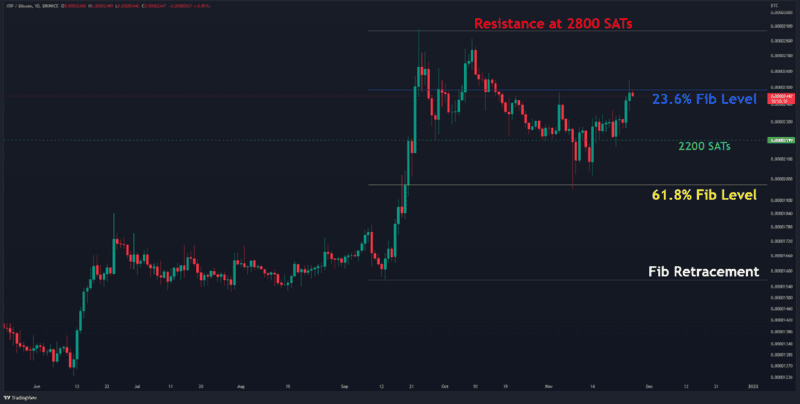
As we enter 2023, Ethereum’s position in the blockchain space remains strong following the successful completion of its transition to Ethereum 2.0. With Ethereum now operating on a proof-of-stake (PoS) consensus mechanism, the network is poised to benefit from increased scalability, energy efficiency, and the growing adoption of decentralized finance (DeFi) applications. However, Ethereum’s price in 2023 will still be influenced by various external factors, including macroeconomic conditions, competition from other blockchain platforms, and the performance of the broader cryptocurrency market.
This forecast aims to analyze Ethereum’s potential for the year, outlining the fundamental, technical, and market factors that will drive price movements in 2023.
1. Ethereum 2.0 and Layer 2 Scaling Solutions
Ethereum’s transition to Ethereum 2.0 is one of the most significant developments in the blockchain space. With the switch to a proof-of-stake (PoS) model, Ethereum has improved its energy efficiency and made staking a key feature of its ecosystem. This change not only reduces the environmental impact of the network but also incentivizes ETH holders to lock up their assets, reducing the circulating supply and potentially driving the price higher over time.
Furthermore, Ethereum continues to dominate the decentralized finance (DeFi) and non-fungible token (NFT) markets, which remain critical to the overall demand for ETH. As Ethereum’s network becomes more scalable with the introduction of Layer 2 solutions such as Arbitrum and Optimism, the cost of using Ethereum for transactions is expected to decrease, making it even more attractive for developers and users. This will likely drive demand for Ethereum as the preferred blockchain for building decentralized applications.
While Ethereum faces increasing competition from other blockchain platforms, such as Solana, Binance Smart Chain, and Avalanche, its network effect, developer ecosystem, and first-mover advantage will likely help it maintain its dominance in the DeFi and smart contract spaces throughout 2023.
2. Key Levels and Price Outlook for 2023
At the start of 2023, Ethereum’s price is approximately $1,200, which represents a significant decline from its all-time high of $4,800 in November 2021. The price of ETH has been subject to significant volatility over the past year, but it has shown resilience at key support levels. As we look ahead, there are a few critical price levels that will dictate Ethereum’s potential movement throughout the year.
Resistance Levels:
Ethereum has strong resistance at the $1,500 and $1,800 levels, where previous price action has encountered selling pressure. If ETH can break through these levels, it could open the door for a price move toward the $2,000 mark, which could be reached by mid-2023 if bullish momentum continues.
Support Levels:
On the downside, Ethereum has support at the $1,000 level, which has been tested multiple times in the past. If Ethereum faces broader market weakness or additional regulatory concerns, it may dip back towards this support area. Further support exists near the $900 level, which would act as a key area of interest for investors looking to accumulate ETH at lower prices.
Overall, Ethereum’s price movement will likely be influenced by broader market trends, as well as the continued adoption of Ethereum’s Layer 2 solutions and the overall health of the DeFi ecosystem.
3. Institutional Adoption and Regulatory Environment
Institutional interest in Ethereum is expected to grow in 2023, particularly as more financial institutions seek exposure to decentralized finance (DeFi) applications. Ethereum’s position as the dominant blockchain for DeFi makes it a central focus for institutional investors, which could provide upward pressure on the price of ETH.
However, Ethereum’s price in 2023 will also be influenced by the global regulatory environment. Cryptocurrencies are facing increased scrutiny from regulators worldwide, and any new regulatory measures could significantly affect market sentiment. Investors will need to monitor developments in this space closely, as regulatory uncertainty could lead to short-term volatility.
In addition, competition from other smart contract platforms such as Solana, Polkadot, and Avalanche may impact Ethereum’s market share. Although Ethereum remains the most widely used blockchain for decentralized applications, the rise of these competitors could put pressure on its price performance in the medium term.
4. Ethereum Price Prediction for 2023: A Year of Recovery and Growth Potential
Based on the current fundamentals and technical outlook, Ethereum is expected to experience moderate growth in 2023, although price volatility is likely to persist. The key drivers of this growth will be Ethereum’s ongoing dominance in the DeFi and NFT sectors, increased adoption of Layer 2 solutions, and the continued impact of Ethereum 2.0.
In the first half of 2023, Ethereum is expected to trade within the range of $1,200 to $1,500 as the market adjusts to the new macroeconomic environment. During this period, investors may witness some price consolidation, with Ethereum potentially testing key support levels at $1,000 and $900 if the broader cryptocurrency market faces additional challenges.
As the year progresses, Ethereum’s price could see a gradual increase if DeFi adoption continues to grow, and if Ethereum’s Layer 2 scaling solutions gain further traction. By mid-2023, Ethereum may reach the $1,800 to $2,000 range, driven by increasing demand for ETH as a result of its enhanced scalability and efficiency.
However, it is also important to acknowledge that the broader cryptocurrency market is still in a period of uncertainty, and Ethereum’s price could face short-term setbacks due to factors such as regulatory concerns or adverse market sentiment.
5. A Long-Term Growth Opportunity Amidst Short-Term Volatility
In conclusion, 2023 looks promising for Ethereum, with strong long-term growth potential driven by its technological advancements and dominance in the DeFi ecosystem. However, investors should expect short-term price fluctuations, with Ethereum’s price likely testing key support levels before any sustained upward movement.
For long-term investors, any dips in price could present a compelling opportunity to accumulate Ethereum at attractive levels. With Ethereum’s ongoing developments, including the success of Ethereum 2.0 and the growing adoption of Layer 2 scaling solutions, Ethereum remains one of the most promising blockchain projects for the future.



